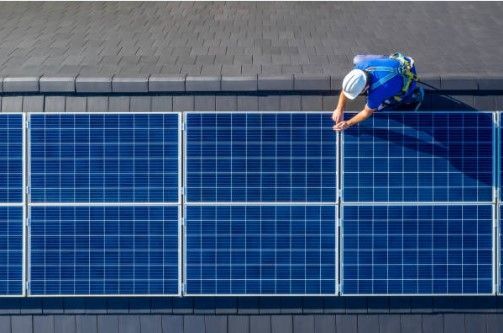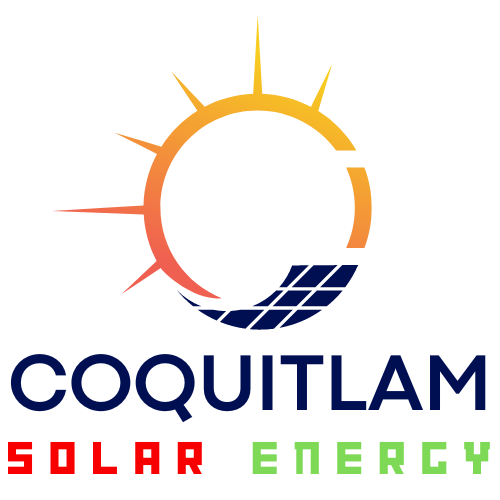Mounting Solutions for Solar Installation in Coquitlam: An Informative Guide
If you are considering getting solar power for your house, you may have questions about selecting a solar mounting system and its installation process. Solar mounting systems play an important role in providing necessary support to keep the panels in the optimal position, maximizing electricity production. These systems must be durable enough to endure severe weather conditions, such as hurricanes, heavy rain, and snowfall. Therefore, choosing the right mounting system holds significant importance.
Now, let's explore everything you need to know in selecting the right solar mounts for your next
solar energy installation.

7 Mounting System Options for Solar Installation
Solar panel mounts are like frames or racks that securely hold solar panels. They are usually light and adjustable to tilt the panels to the right position. These mounts can be installed in different areas of your property and are designed to withstand strong winds.
The type of mounting structure you select for your solar panels affects their temperature control and efficiency and impacts the project's overall cost.
How do you choose the most suitable mounting structure for your project? Let’s get over the question by exploring the seven solar mounting system options.
1. Roof Mounting Systems
Roof mounts for solar panels are the most common and popular choice among homeowners because they keep the panels elevated and don't take up yard space. Installing the panels on the roof also allows them to receive the most sunlight.
Some roof mounts are designed to be installed underneath the roofing material. This makes it easier to remove the solar panels in the future or replace the roof without disturbing the panels themselves.
This type of mounting system needs to be installed before the roofing is put in place, similar to installing a skylight. The mount is placed on the roof, and the siding is installed around it, using flashing to create a watertight seal. Usually, this mount is flush with the roof, with the panels sitting directly on top. However, mount systems also go under the siding, with supports installed beneath the roofing.
Pros
- Roof mounts are surprisingly cost-effective since they can be easily installed flat on the roof.
- Most roofs already have the right angle to capture sunlight efficiently, so there's no need for additional adjustments.
Cons
- The installation process can be risky. Solar installers have to carefully climb up on the roof and attach the mounts without causing damage to the existing roofing. It's a delicate and sometimes risky procedure that takes longer than installing panels on poles or ground mounts.
- While roof mounts keep the panels out of the way in the yard, they often become more expensive when considering the total installation costs.
2. Ground Mounting Systems
Ground mounts for solar panels are strong structures installed directly into the ground on your property. Depending on the specific frame, these mounts are built to support several solar panels.
Most ground mounts are designed to keep the solar panels at a fixed angle throughout the year. This means that the panels won't always operate at maximum efficiency. However, some panels have an adjustable angle feature, allowing you to set the optimal angle for capturing sunlight throughout the year. This helps improve your solar sun number score.
Pros
- It is a cost-effective option.
- The panels are easily accessible for maintenance and cleaning.
Cons
- Ground mounts are not allowed in some areas according to local codes.
3. Pole Mounting Systems
Pole mounts for solar panels are strong structures designed to hold a group of solar cells mounted on a single pole. A properly installed pole can support a surprisingly large number of solar panels, up to sixteen panels in some cases.
Pros
- It requires less space on the ground compared to ground mounts.
- A solar panel pole mount protects your roof from unnecessary strain.
- Many pole mounts are designed to allow the panels to rotate from side to side and tilt up and down.
Cons
- Pole mounts require additional space compared to roof mounts.
- Maintenance of the panels on pole mounts can be more challenging due to their elevated position.
- It is susceptible to high wind loads and requires proper anchoring.
4. Solar Tracking Systems
A solar tracking system automatically follows the movement of the sun. Unlike fixed solar mounts, it can boost solar energy output by around 20-30%. This technology is becoming more popular in residential and commercial solar projects because it utilizes advanced and efficient methods to capture sunlight.
Pros
- By adjusting the angle of the panels to face the sun directly, solar tracking systems improve energy conversion and make better use of available sunlight.
- It can adapt to different weather conditions and seasons, ensuring consistent energy generation.
Cons
- The moving components of solar tracking systems need regular inspections and upkeep, adding to maintenance efforts and expenses.
- It requires more space to accommodate their movement.
5. Floating Mounting Systems
Floating solar mounting systems allow solar panels to be installed on bodies of water such as lakes, ponds, reservoirs, or seas. The panels are placed on platforms that float on the water's surface and can be anchored or attached to the bottom.
Pros
- It uses water areas that would otherwise be unused or not fully utilized, freeing up land for other purposes.
- The presence of water can help cool the solar panels, potentially improving their efficiency and lifespan. The reflection of light off the water can increase the amount of sunlight reaching the panels, which can further boost energy production.
Cons
- Setting up floating mounting systems requires specialized installation procedures and equipment.
- Accessing and maintaining the panels on the water can be more challenging than ground-mounted systems.
6. Integrated Roof Mounting Systems
Integrated Roof Mounting Systems for solar panels are designed as specialized structures that facilitate seamless installation of solar panels on rooftops. These systems are engineered to integrate with the existing roof structure. This mounting system offers a secure and visually appealing solution for solar panel installation. These systems provide a stable platform for the panels, allowing them to capture sunlight effectively and generate electricity.
Pros
- Rooftops provide space for solar panel installation, maximizing energy generation without using additional land.
- It is easy to access and clean from the rooftop.
Cons
- Your roof must be compatible enough to install integrated roof mounting systems.
- In some cases, roof penetration can be necessary for installation, which requires careful sealing to prevent leaks.
- Integrated roof mounting systems are specific to the roof and aren’t easily adjustable or transferable if modifications are needed.
7. Ballasted Mounting Systems
Ballasted mounting systems for solar panels are an installation method that involves using weights or ballasts to secure the solar panels. These systems are designed to provide stability and support for the panels without roof penetrations or anchoring. Ballasted mounting systems have weighted components to provide stability and ensure the panels remain in position.
Pros
- Ballasted mounting systems do not require roof penetrations, preserving the roof's integrity and reducing the risk of leaks.
- These systems can be installed relatively quickly compared to drilling or structural modification methods.
- They can be used on various roof types, including flat roofs and roofs with low load-bearing capacity.
Cons
- The added weight of ballasts and panels must be carefully evaluated to ensure that the roof structure can safely support the load.
- Ballasted systems must be properly designed and weighted to resist wind uplift forces and prevent panels from dislodging during strong winds.
- Accessing and maintaining the panels can be more challenging due to the presence of ballasts and the need for careful handling during maintenance or repairs.
- These systems are typically unsuitable for roofs with steep slopes, as distributing weight evenly and ensuring stability can be difficult.
How To Choose the Right Solar Panel Mount Sizes
You need to take into account both your present needs and anticipated future requirements when choosing the size of solar panel mounting. While smaller mounts may be more affordable initially, they may not be the best choice if you anticipate expanding your solar array.
If you foresee the possibility of increasing the size of your solar panel setup in the future, opting for a larger mount makes more sense. Investing in a single mount capable of holding eight panels is more cost-effective than purchasing two smaller mounts designed for four panels each. Planning in this manner can lead to significant savings down the line.
Do Solar Installation from the Best-Rated Solar Companies
Choosing the right way to install solar panels is important for a successful solar energy system. Each type has pros and cons, so it's important to consider space, roof, maintenance, and local rules.
Getting professional help ensures the right design, engineering, and safety for any mount. Searching for “solar companies near me”? If you need help with your
solar installation needs, don’t hesitate to get a free quote at Coquitlam Solar Energy. Discover the benefits of clean, renewable energy for your home or business.
Contact us now to learn more about Coquitlam Solar Energy solutions and take the first step towards a greener future. Don't miss out on this opportunity. Call us now to get started.
CONTACT
Telephone: 604-337-1958
E-mail: info@coquitlamsolarenergy.ca
LOCATION
Coquitlam, BC V3B 0A4, Canada
Coquitlam Solar Energy | All Rights Reserved | 2023
